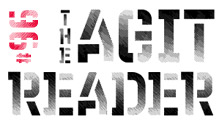
I Think We’re Alone Now
Gettin’ Together
Travelin’
My Head, My Bed & My Red Guitar
Collectors’ Choice
The modern music landscape has undergone a fundamental shift over the past decade or so, as the proliferation of digital music formats and distribution mechanisms have triggered what many have hailed as the revival of the “single.” It’s interesting, then, that 2010 sees the reissuing of this collection of albums by Tommy James & the Shondells, a group that, in the mid- to late 1960s, was a quintessential singles band. The band was responsible for a good handful of bubblegum and psychedelic pop hits, from “Hanky Panky” to “Crimson and Clover,” and from “Mony Mony” to “Crystal Blue Persuasion.” Perhaps seeking to paint a fuller picture of the Pittsburgh-based group, reissue label Collectors’ Choice has released three Tommy James & the Shondells albums and one Tommy James solo LP, all of which were originally pressed by the controversial Roulette Records label.
Marketed as the album that heralded the band’s transition from a singles group to mature, album-oriented artists, 1967’s I Think We’re Alone Now still comes off as more of a collection of songs than a cohesive work, and it’s not surprising that the best songs from the album are the two Top 10 singles. The title track is another justifiably ubiquitous Tommy James & the Shondells classic, and in many ways it’s the blueprint for the equally fantastic “Mirage.” (The song is actually the chords of “I Think We’re Alone Now” in reverse as a result of James hearing the title track played backwards.) Both are dynamic bubblegum pop songs that deftly package the angst and exhilaration of some not-so-innocent teenage years into supremely catchy sub-three minute packages. That’s not to say that I Think We’re Alone Now’s other tracks aren’t worthy. “What I’d Give to See Her Face Again” is a great pop ballad, and “Gone, Gone, Gone” comes close to the majesty of the album’s hits. But other songs feel too much like filler, especially the covers of the Rivieras’ “California Sun” and the Isley Brothers’ “Shout,” which lack the raw energy of the more popular versions.
While lacking in smash hits, I Think We’re Alone Now’s follow-up, Gettin’ Together has a more consistent feel and may serve as the band’s bubblegum masterpiece. Whether it’s the uptempo of the title track and “Sometimes I’m Up (Sometimes I’m Down)” or the pop balladry of “I Want To Be Around You,” there’s a level of substantial quality here not typical of many pop albums of the era. Even when the band engages in some studio shenanigans—like the seemingly inexplicable mid-song fade- and drop-outs in the otherwise straightforward “Some Happy Day”—a sizzling rocker like “Love’s Closin’ In On Me” more than makes up for it.
Travelin’ and My Head, My Bed & My Red Guitar might not reach the heights of Gettin’ Together, but both albums are equally interesting in the way they chart the growth of the Shondells and James. The last proper Tommy James & the Shondells album, 1970’s Travelin’, documents the end of the band’s psychedelic period, inspired at least in part by James’ documented drug use. Sure, this might be your square cousin’s psychedelia, but there’s something to be said for the groovy simplicity of both the rollicking title track and “Candy Maker” as well as the smooth sentimentality of “Kelly Told Anne” and “She.” And tracks like “Early In The Mornin’,” which features a falsetto vocal over a stone-blues riff that must be a subtle parody of early Led Zeppelin, nicely borrow some of the humor that manifested itself on previous efforts. This isn’t face-melting stuff, but if you’re in the mood for a smooth and eminently comfortable trip, Travelin’ is your ticket.
Originally released in 1972, James’ second solo album, My Head, My Bed & My Red Guitar moves in a completely different direction. Fittingly recorded in Nashville, the record is less a pop album than a soulful country record. By this point, James had cleaned up his act and found religion, and it shows in songs like “White Horses,” which does well with the rock revival idiom and features a compelling lead vocal that interacts nicely with the gospel choir backup. There are some decent country gems (including “Walk A Country Mile” and the more somber “Who’s Gonna Cry”) to be found on this record, while some songs, like the great “The Last One To Know,” are decidedly less country, instead occupying a space between late-period Elvis and classic blue eyed soul.
Even though these records (aside from I Think We’re Alone Now) all made relatively small splashes on the evolving rock scene of the late ’60s and early ’70s, these reissues remind us that the quality and diversity of the music of James & the Shondells make them one of the more intriguing “singles acts” from their era. And while rumors of a major motion picture based on James’ autobiography, Me, the Mob, and the Music (the names Martin Scorsese and Val Kilmer have been floated by James and associates), have yet to turn into any concrete plans, the band’s brightest moments seem destined to remain in the popular consciousness, making the reissuing of these records a necessary and fruitful endeavor.
Ron Wadlinger
PAST PERFECTS
Big Audio Dynamite, This Is Big Audio Dynamite
Elliott Smith, Roman Candle and From a Basement on the Hill
Nick Cave and the Bad Seeds Reissues Part Two
Black Tambourine, Black Tambourine
Paul Revere & the Raiders, The Complete Columbia Singles
The Jon Spencer Blues Explosion, Dirty Shirt Rock 'n' Roll: The First Ten Years
The Plimsouls, Live! Beg, Borrow & Steal
Pavement, Quarantine the Past
Fela Kuti, "Chop 'n' Quench" Batch
Buzzcocks, Another Music in a Different Kitchen, Love Bites, and A Different Kind of Tension
Frank Sinatra, Strangers in the Night
Next Stop... Soweto
Good God! Born Again Funk
Animal Collective, Campfire Songs
